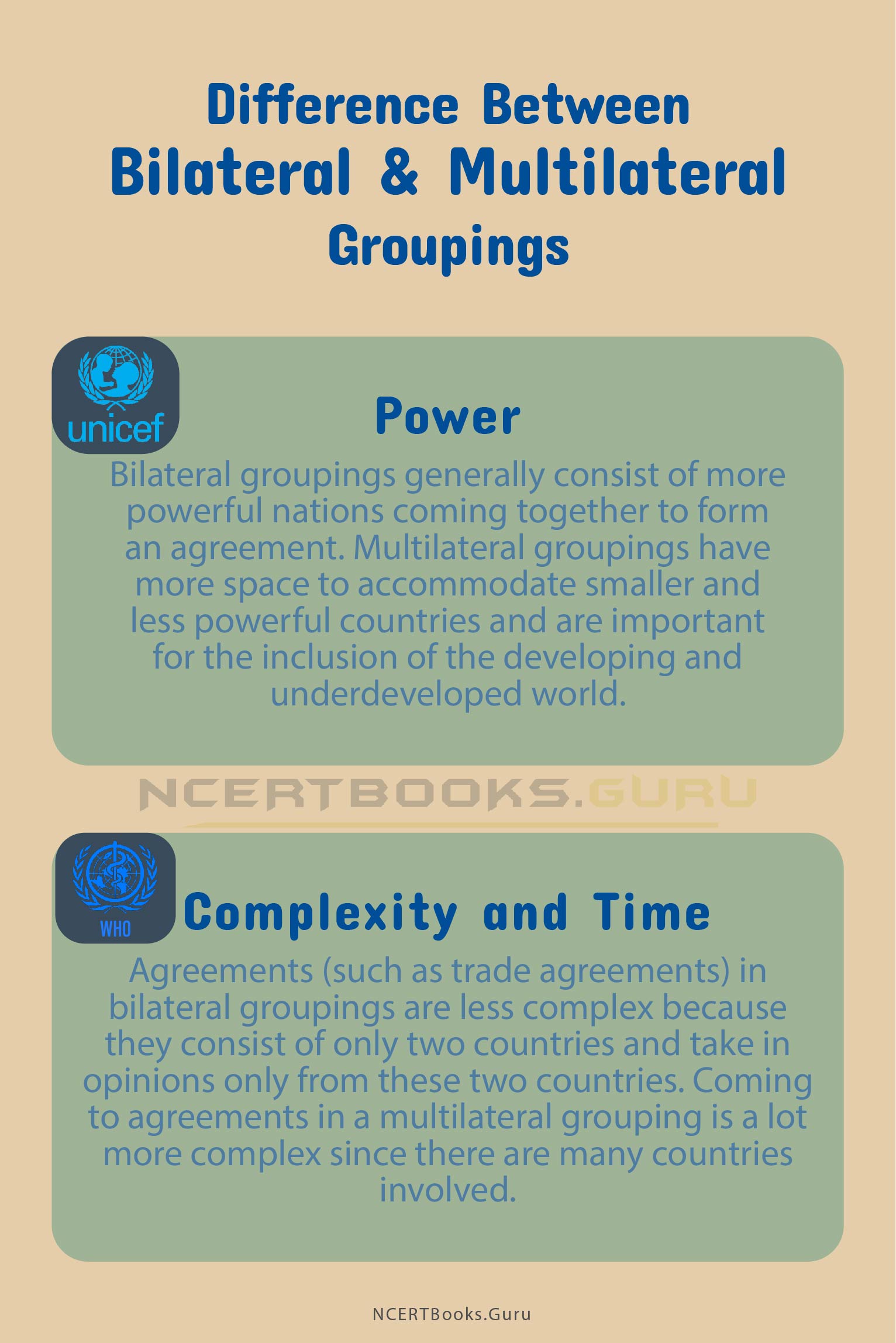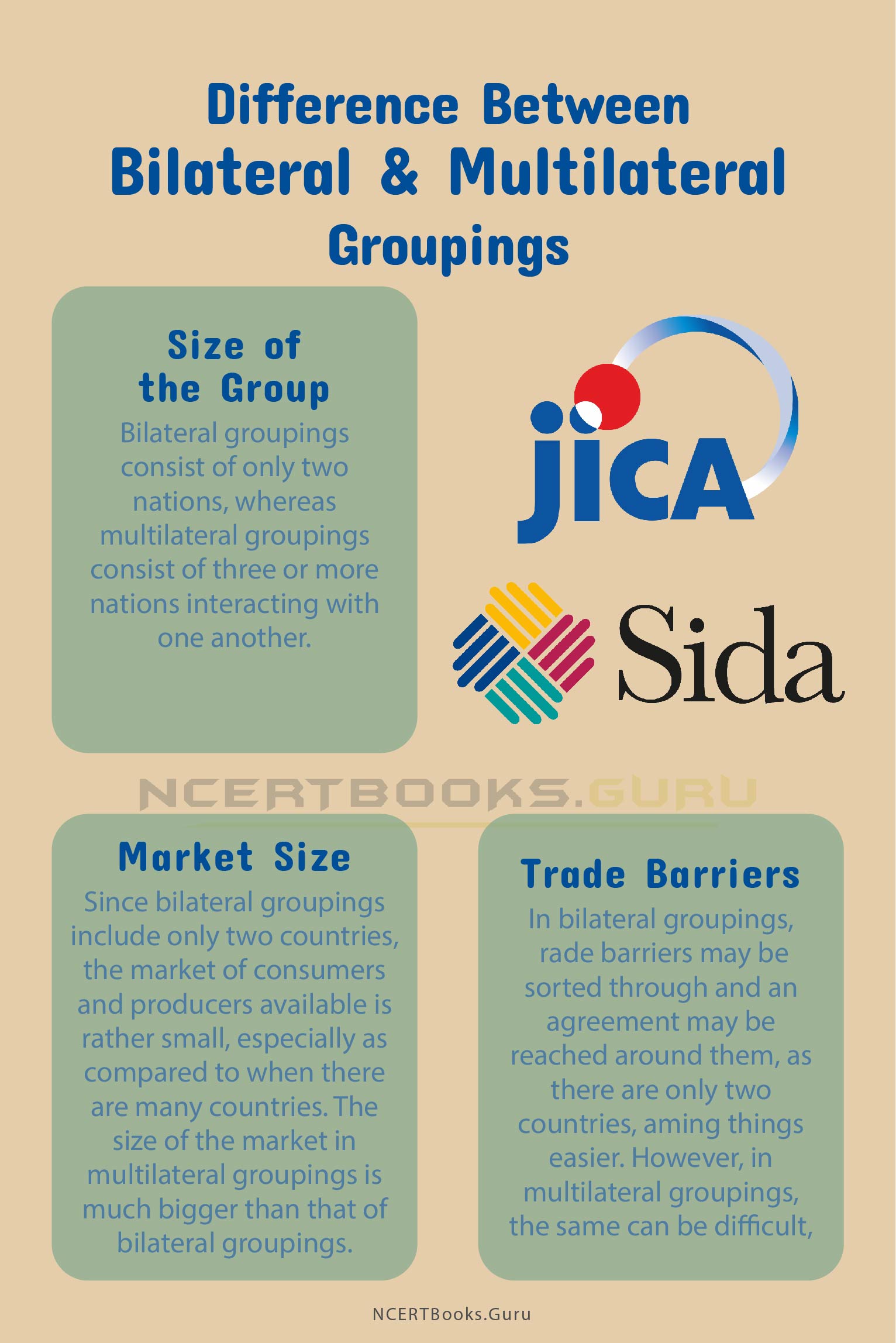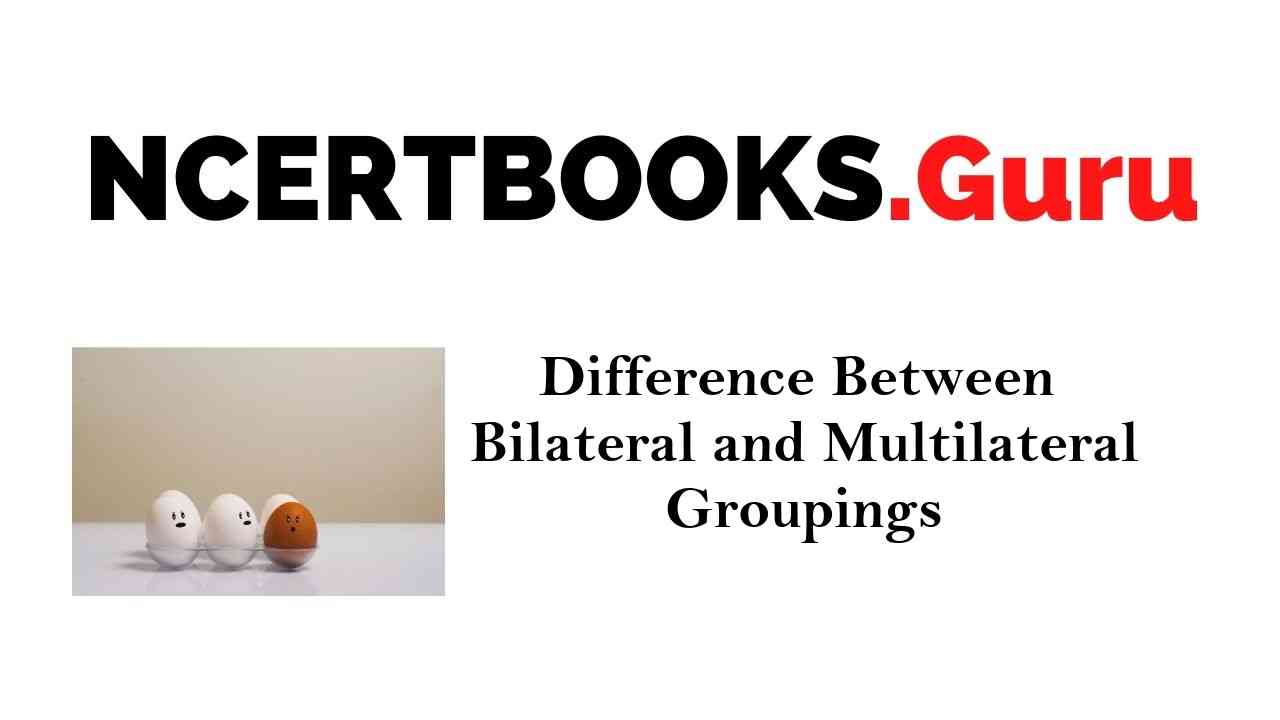When we talk about the difference between bilateral and multilateral groupings, we are actually talking about the relationships shared between two or more countries and how they interact with each other. A bilateral grouping refers to the relation between only two countries, such as trade between two countries, or migration between two countries, etc. Multilateral grouping refers to the relationships shared by multiple countries together, or a group of countries. For example, a multilateral grouping would include how the countries of the European Union (EU) interact with one another in terms of trade, economy, resource distribution, etc. Below, there are some main differences between bilateral and multilateral groupings.
You can also find differences between articles on various topics that you need to know. Just tap on the quick link available and get to know the basic differences between them.
Difference Between Bilateral and Multilateral Groupings
Size of the Group
Bilateral groupings consist of only two nations, whereas multilateral groupings consist of three or more nations interacting with one another.
Power
Bilateral groupings generally consist of more powerful nations coming together to form an agreement, and this agreement will affect the rest of the world due to the amount of influence these nations hold due to their stance in world politics. Multilateral groupings have more space to accommodate smaller and less powerful countries and are important for the inclusion of the developing and underdeveloped world. For example, a bilateral grouping between the USA and China would have more influence on world politics than a multilateral grouping like SAARC (South Asian Association for Regional Cooperation).
Complexity and Time
Agreements (such as trade agreements) in bilateral groupings are less complex because they consist of only two countries and take in opinions only from these two countries. Coming to agreements in a multilateral grouping is a lot more complex since there are many countries involved, all of whose opinions and sides need to be heard before coming to an agreement. Due to the same, even the time taken to come to agreements after concluding negotiations in bilateral groupings is much shorter than the same for multilateral groupings. The more members in a grouping, the longer and more complex the negotiations become.

Market Size
Since bilateral groupings include only two countries, the market of consumers and producers available is rather small, especially as compared to when there are many countries. The size of the market in multilateral groupings is much bigger than that of bilateral groupings. However, this is also affected by the various determinants of demand and supply such as purchasing power, population, level of technology, level of output and returns, etc. For example, India trading with China, where technology is advanced and the populations are high as well, the market is definitely bigger. Smaller countries trading with one another with low levels of output would also make for a smaller market. Thus, the point about market size in the difference between bilateral and multilateral groupings is slightly fuzzy, but its essence is that more countries will bring a larger market.
Trade Barriers
This is an extension of the point about complexity, where trade barriers in different countries can add to the complexity of negotiations and agreements in the world domain of economy and politics. In bilateral groupings, trade barriers may be sorted through and an agreement may be reached around them, as there are only two countries, aming things easier. However, in multilateral groupings, the same can be difficult, because navigating through each country’s trade barriers to come up with an agreement suitable for all countries can be a tough job.

